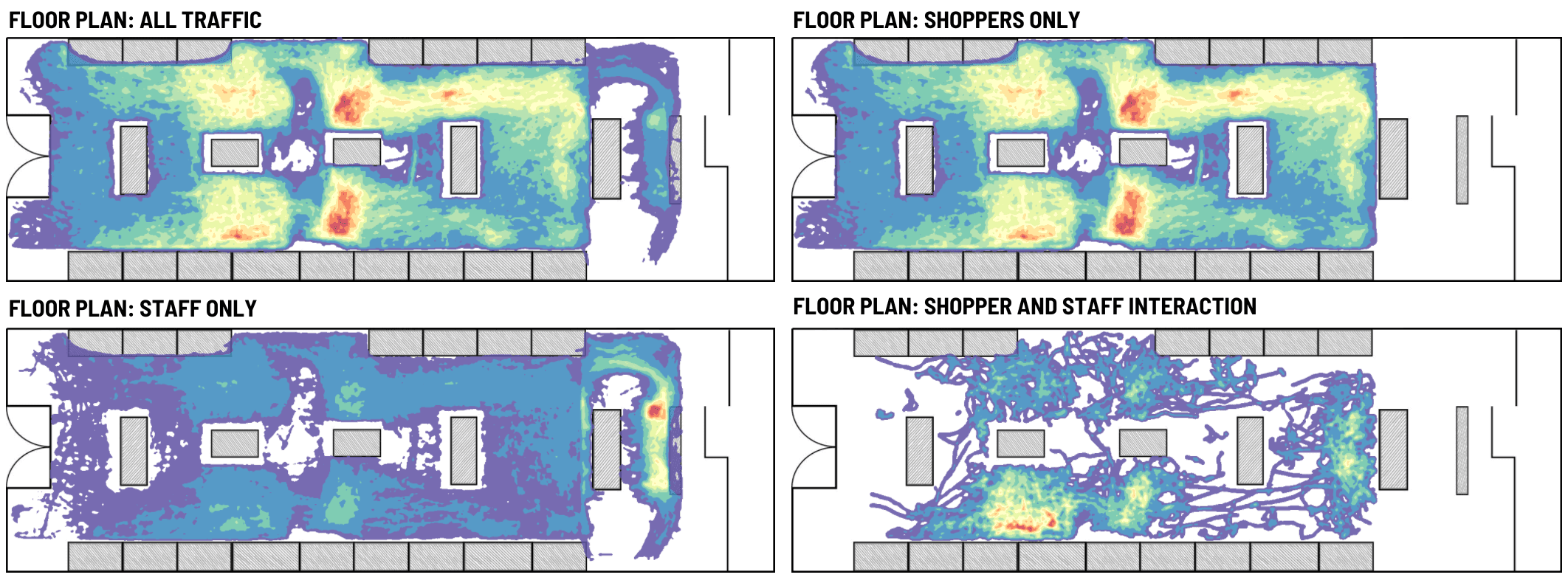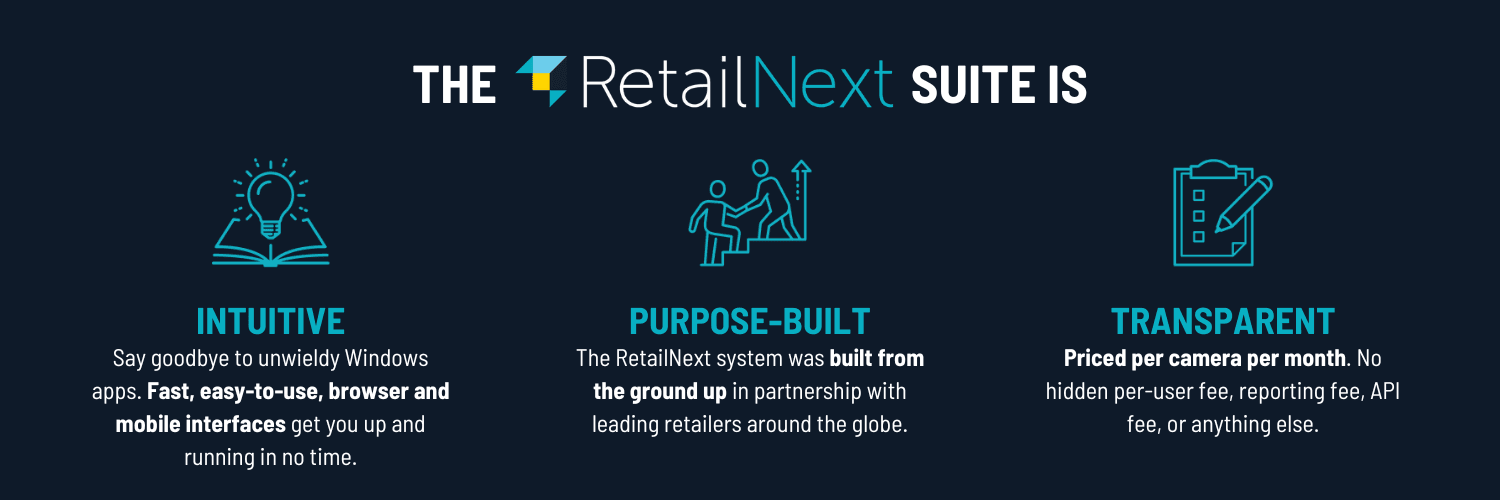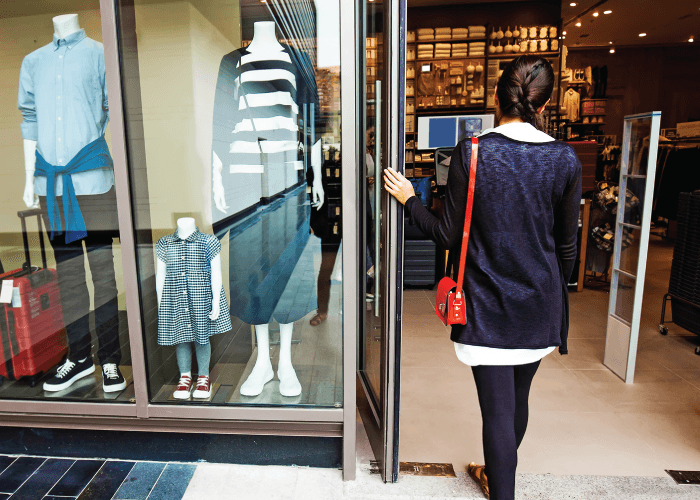Recognizing The Value Of Shopper Journey Analysis In Stores

On this page
Shopper Journey Analysis, sometimes called ‘Full Path Analysis’, is a key tool in modern retailers’ arsenals. Data from this mapping can empower retailers to create more efficient, customer-focused, and profitable brick-and-mortar stores. It allows retailers to make data-driven decisions, enhance the customer experience, and ultimately drive success in a highly competitive retail landscape.
This granular data allows retailers to get reliable answers to questions like
What is my traffic to individual displays and how long do shoppers engage with products?
What routes do shoppers commonly take when navigating my store?
What areas of the store are visited by shoppers before they engage with a staff member?
How are my marketing and product initiatives (window displays, signage, and promotions) influencing the shopping journey?
Shopper journey mapping allows retailers to go beyond traffic counting and conversion metrics and begin to understand the complete in-store shopper experience. In this blog, we provide a full explanation of how this technology works, why retailers should be investing in it, and how RetailNext can help chart the course to better stores.
LEARN MORE: RetailNext’s Shopper Journey Offering
How Shopper Journey Heatmapping Works
In-store IoT devices like RetailNext’s Aurora capture millions of data points a day for customer journeys in each store, and can ‘talk’ to each other to build a single view of each shopper's journey. These data points are stitched together to create a cohesive picture of how shoppers interact with the store and the associates within it.
Shopper data can then be segmented into shopper profiles to help retailers understand the in-store behavior of specific shopper profiles.
Purchaser vs non-purchaser: Analyze shopper journeys by segmenting shoppers into purchasers and non-purchasers.
Shopper vs staff: Get insights into when, where, and how long shoppers interact with associates, and how this impacts purchase behavior.
Demographics: AI-based demographics engines can anonymously segment shoppers by gender.
Once this anonymized data has been collected and segmented, it holds unparalleled value for retailers who are looking to fine-tune their in-store experience.

The Benefits Of Tracking Shopper Journeys
These are some benefits of understanding how shoppers navigate stores – and what encourages them to stay and, ultimately, convert.
Optimizing Store Layout
Understanding how shoppers move through a store helps retailers optimize the store's layout. By knowing which areas receive the most foot traffic and where shoppers tend to dwell, retailers can strategically place high-margin or popular products in high-traffic zones and reconfigure the layout to encourage more efficient shopping paths. This data also helps retailers identify opportunities for cross-selling and upselling.
Additionally, this data can help merchandising efforts by alleviating guesswork and facilitating A/B testing. By analyzing shopper journeys and dwell times, retailers can identify which displays attract the most attention and which may need improvement. This insight can help in creating more engaging and enticing in-store experiences. Furthermore, A/B testing can be conducted in flagship stores and insights can be operationalized at scale. Subtle changes to the layout, displays, or product placements can be made and how these changes impact shopper behavior can be monitored. This facilitates data-driven decision-making about what works best for specific customer bases.
Enhancing Customer Experience
Mapping shopper journeys allows retailers to identify pain points in the customer experience. For instance, if shoppers frequently get stuck in a bottleneck or if a particular area of the store is consistently crowded, steps can be taken to alleviate these issues, ensuring a smoother and more pleasant shopping experience. Similarly, staff scheduling can be done in line with this data as knowing where and when customer traffic is highest, retailers can allocate staff more effectively. They can schedule more associates during peak shopping times, improving customer service and reducing wait times, while saving on labor costs during slower periods.
Moreover, staff training and performance can be assessed in real time. This data empowers management to develop a deeper understanding of how and where store associates and shoppers interact throughout the store. With this, management can identify shortcomings in staff interactions with shoppers (and fix these practices), as well as take advantage of key interaction areas to drive best-in-class engagement.
Offering Better Promotions
With shoppers being more budget-conscious than ever before, promotions will be a huge drawcard for retailers in the year ahead. Interior analytics can help retailers make more informed decisions about stock levels in preparation for key shopping occasions. For instance, if store staff notice high traffic in a particular section of the store, they can ensure that the products in that area are well-stocked to meet customer demand. Conversely, in less trafficked areas, they can adjust inventory levels accordingly to minimize overstocking.
Plus, the ROI of promotions can be more accurately measured. Retailers can assess the effectiveness of in-store promotions, advertisements, and signage by tracking how shoppers interact with them. This information can be used to fine-tune marketing efforts and determine which promotions are most successful.
READ MORE: How Advanced Analytics Empower Multi-Brand Retail
Choosing A Tech Partner
Choosing the right tech partner for your business can be a daunting task. It all comes down to agility, ease of implementation, level of support, and cost. At RetailNext, we pride ourselves on our superior service and commitment to helping your brand grow.
In a nutshell, the RetailNext suite of interior analytics helps retailers
Understand in-store opportunities by visualizing shopper behavior data through direction maps, dwell analysis, kinetic heat maps, POS video integration, and demographics.
Test layouts and merchandising before mass rollout by identifying specific in-store zones to test and measure displays, product placement, and fixtures.
Use kinetic heat maps and zone transition maps to help eliminate friction in the shopper journey, and to pinpoint high- and low-trafficked areas.
Rest assured with privacy-friendly data and demographics that are CCPA- and GDPR-compliant.
Enjoy easy implementation with the Aurora, our next-gen sensor that boasts two to three times the coverage of other sensors on the market.

Ultimately, the data generated by mapping shopper journeys provides retailers with valuable insights that can guide strategic decision-making. By understanding customer behavior at a granular level, retailers can adapt and improve their stores to stay competitive and meet evolving customer preferences.
CONTACT US: Find Out How We Can Take Your Stores To The Next Level
About the author:

Ashton Kirsten, Global Brand Manager, RetailNext
Ashton holds a Master's Degree in English and is passionate about physical retail's unbridled potential to excite, entertain, serve, and solve problems for today's shoppers.




